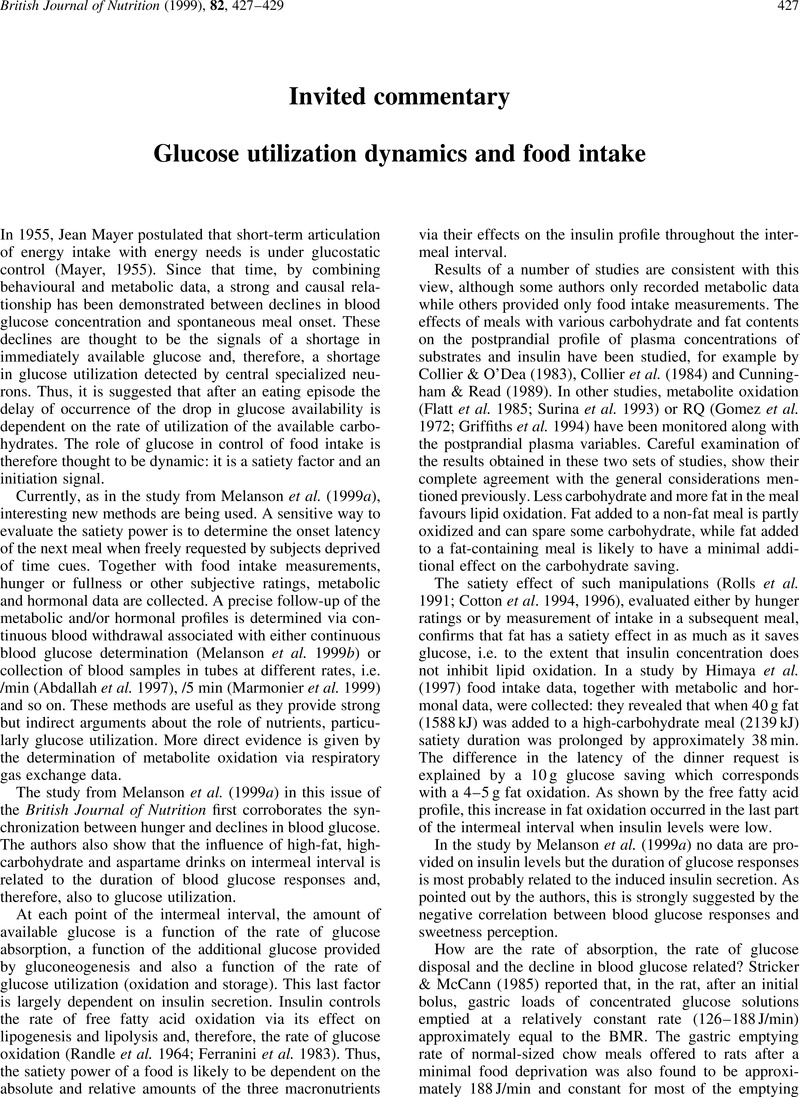Crossref Citations
This article has been cited by the following publications. This list is generated based on data provided by Crossref.
Van Wymelbeke, Virginie
Louis-Sylvestre, Jeanine
and
Fantino, Marc
2001.
Substrate oxidation and control of food intake in men after a fat-substitute meal compared with meals supplemented with an isoenergetic load of carbohydrate, long-chain triacylglycerols, or medium-chain triacylglycerols.
The American Journal of Clinical Nutrition,
Vol. 74,
Issue. 5,
p.
620.
Rigaud, D.
2007.
Traité de nutrition artificielle de l’adulte.
p.
295.
Gatta, Blandine
Zuberbuehler, Christine
Arnold, Myrtha
Aubert, Roberte
Langhans, Wolfgang
and
Chapelot, Didier
2008.
Acute effects of pharmacological modifications of fatty acid metabolism on human satiety.
British Journal of Nutrition,
Vol. 101,
Issue. 12,
p.
1867.
Chaput, J-P
and
Tremblay, A
2009.
The glucostatic theory of appetite control and the risk of obesity and diabetes.
International Journal of Obesity,
Vol. 33,
Issue. 1,
p.
46.
Monro, John A.
Wallace, Alison
Mishra, Suman
Eady, Sarah
Willis, Jinny A.
Scott, Russell S.
and
Hedderley, Duncan
2010.
Relative glycaemic impact of customarily consumed portions of eighty-three foods measured by digestingin vitroand adjusting for food mass and apparent glucose disposal.
British Journal of Nutrition,
Vol. 104,
Issue. 3,
p.
407.
Lemmens, Sofie G
Martens, Eveline A
Kester, Arnold D
and
Westerterp-Plantenga, Margriet S
2011.
Changes in gut hormone and glucose concentrations in relation to hunger and fullness.
The American Journal of Clinical Nutrition,
Vol. 94,
Issue. 3,
p.
717.
Yang, Yunyu
Hu, Cheng Jun
Zhao, Xichen
Xiao, Kaili
Deng, Ming
Zhang, Lin
Qiu, Xinggang
Deng, Jinping
Yin, Yulong
and
Tan, Chengquan
2019.
Dietary energy sources during late gestation and lactation of sows: effects on performance, glucolipid metabolism, oxidative status of sows, and their offspring1.
Journal of Animal Science,
Vol. 97,
Issue. 11,
p.
4608.



